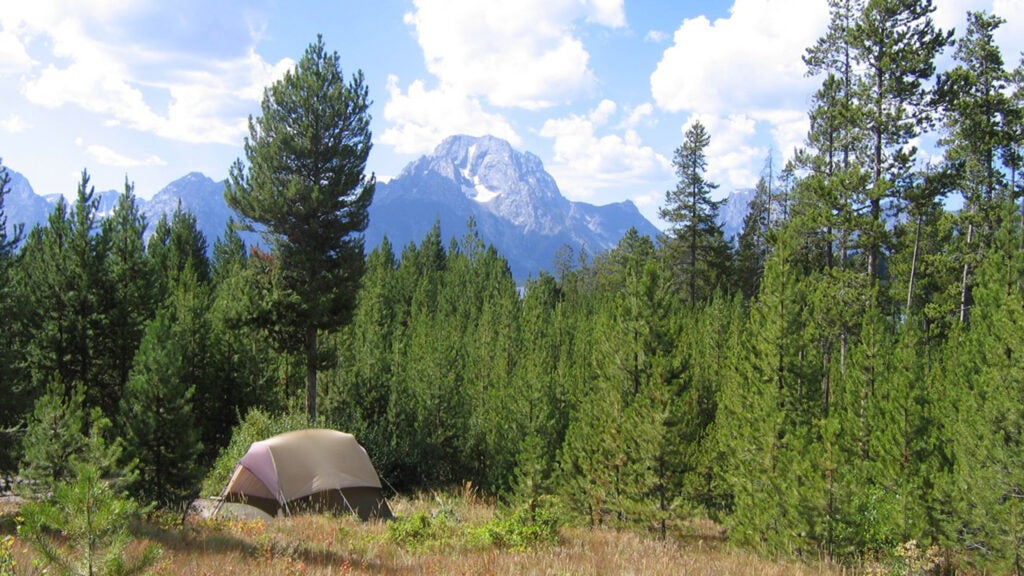No products in the cart.
Outdoor Adventure
How to Book the Best Campsites in National Parks
Years ago, my wife and I took a month-long road trip with our four-year-old twins to hit a handful of national parks between Colorado and California. We rolled up to the first stop, Rocky Mountain National Park, with no campsite reservation but hearts full of optimism. Surely there would be a last-minute cancellation, and we’d be able to pitch our tent with a view of the famous 14er Long’s Peak.
No such luck. We settled for a site at a nearby Jellystone RV Park, amid a fleet of RVs. It was fine—there was a putt-putt course that my kids thought was awesome—but it wasn’t the national-park camping experience we envisioned. We repeated this process across the American West, settling for lesser digs outside of parks because someone (me) didn’t make reservations ahead of time.
The moral of this story? If you want to camp in our national parks, plan ahead, now more than ever. Camping is only getting more popular, with more than 13 million overnight stays in 2022, almost a million more than the previous year, according to National Park Service data.
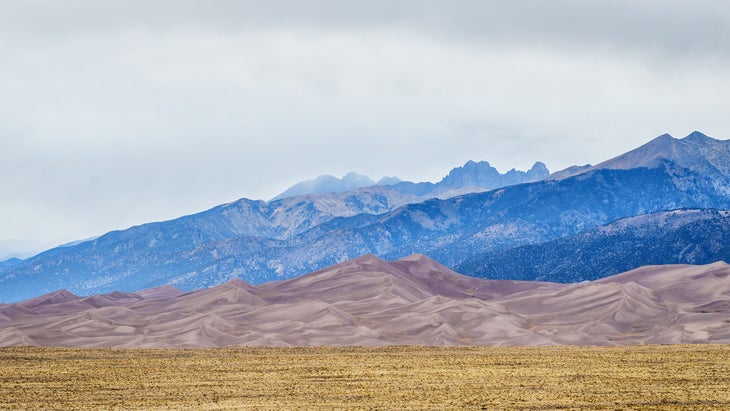
Don’t panic. Most National Park Service campgrounds can be reserved six months in advance on a rolling basis through the site Recreation.gov. That means if you want to camp in our parks this summer, start planning now and make your reservations this winter.
With personal experience and intel from The Dyrt, we’ve compiled a list of the most notoriously hard-to-book campsites in the NPS and explained exactly how to score the best sites in 2024.
1. Slough Creek Campground: Yellowstone National Park, Wyoming

Slough Creek Campground is one of the most coveted campgrounds in the entire national-park system, booked in full 100 percent of the season, according to the recent report by The Dyrt. Blame the perfect combination of remoteness and natural beauty; this small campground sits on the edge of Slough Creek in Yellowstone National Park, in a meadow at 6,250 feet, surrounded by evergreens and with the peaks of the Northern Range rising on the horizon. It’s primitive, with vault toilets and no showers. Its proximity to the Lamar Valley makes it a hotbed of wildlife activity; bison may cruise by the campground.
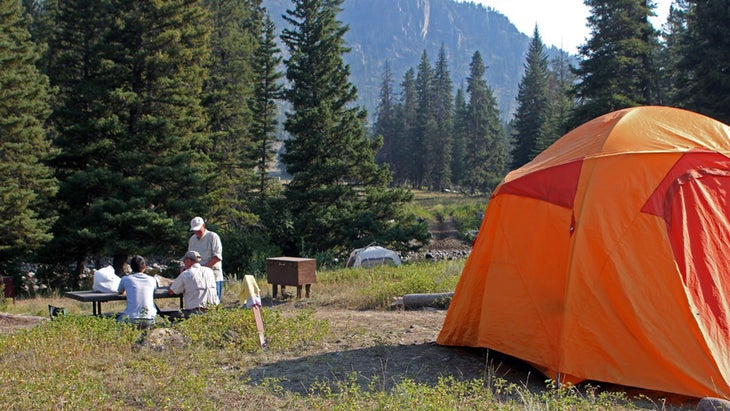
Size: 16 sites for tents and small RVs (no hookups)
Season: Slough Creek is typically open for reservations from the end of June to the beginning of October. It was open from June 23 to October 8 last year.
Reserve: Six months in advance on a rolling basis. First opportunity will be at the end of January.
Fee: $20 per night
Best Site: There isn’t a bad site in the entire campground, and most sites will have you sleeping close to the river. Site 1 has the most privacy, while sites 5, 6 and 7 will have you pitching a tent just above the river.
Awesome Adventure: Bring your fly rod and cast for cutthroat trout in Slough Creek, which is one of the most beloved trout fishing destinations in the country.
2. Signal Mountain Campground: Grand Teton National Park, Wyoming
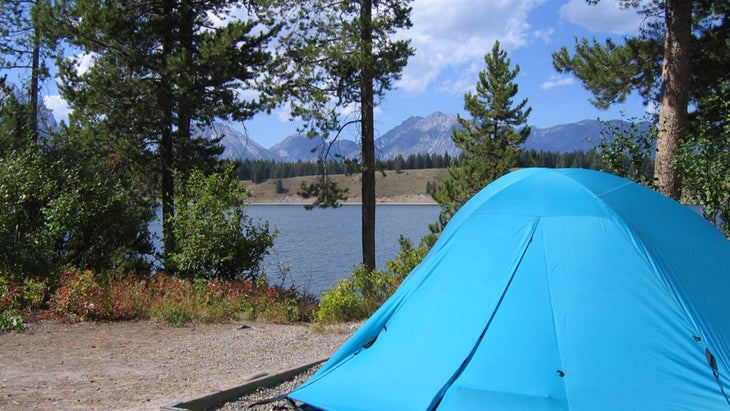
All of Grand Teton National Park’s campgrounds require reservations, and they all fill up fast. Signal Mountain Campground sits in the heart of the park close to some of the area’s signature adventures, with spots for both RVs and tents, making it popular with families, retirees, and hardcore adventurers alike.. It also has sites that are tucked into tall lodgepole pine forests, and others with views of Jackson Lake, Mount Moran, and the Teton Range.
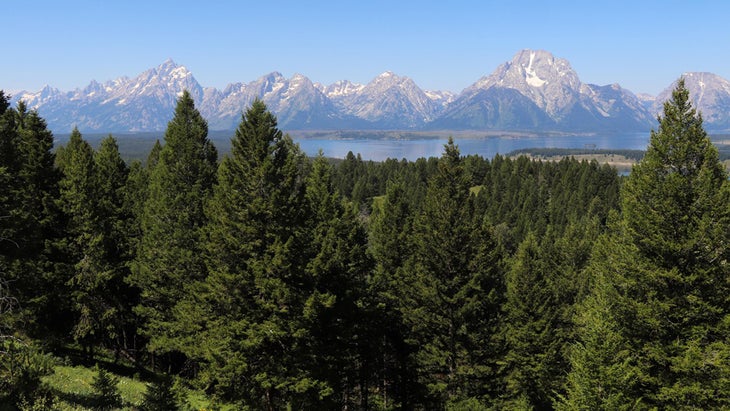
Size: 81 sites, tents and RVs
Season: From Memorial Day (May 27) through Columbus Day (October 14).
Reserve: Make reservations up to six months in advance on a rolling basis. First opportunity is December 27.
Fee: $54 per night for a tent site
Best Site: Site 15, off Loop 1, has great views of Jackson Lake.
Awesome Adventure: Hike the six-mile Signal Mountain Trail, which starts at the campground and climbs up the side of 7,727-foot Signal Mountain, offering views of the lake below.
3. Fruita Campground: Capitol Reef National Park, Utah
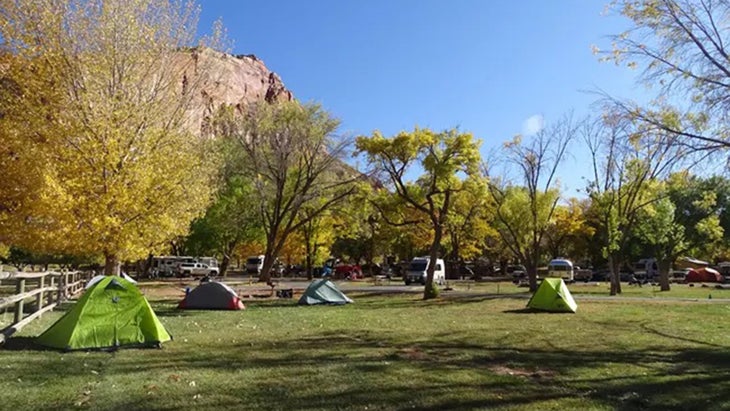
Capitol Reef National Park gets less attention than Utah’s other national parks, but Fruita Campground stays booked 97 percent of the time. We know why: this is your chance to stay in an actual oasis. While the rest of Capitol Reef is known for its desert landscape and sandstone features, the sites in Fruita are surrounded by grass and vibrant fruit trees (peaches, pears, apples, and apricots) planted by pioneers in the 1880s. You can pick ripe fruit in season from any tree with a “U-pick” sign on it ($2 per pound). You’ll also have great views of towering sandstone canyon walls and easy access to the Fremont River.
Size: 65 sites, tents and RVs
Season: Open for reservations March 1 to October 31, then first come/first serve November 1 to February 28.
Reserve: Six months in advance. That means Nov. 1 for a March 1 campsite, and so on. This one opens earlier than many other campgrounds, so keep that in mind.
Fee: $25 per night
Best Site: Sites 31, 33, and 36 back up to the Chestnut Orchard, which has pears and multiple varieties of apples.
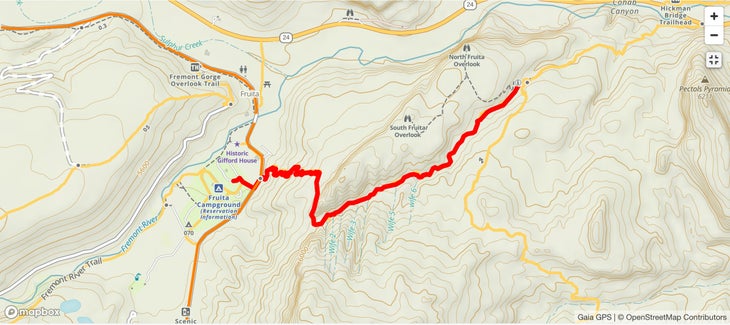
Best Adventure: From the campground, hike the three-mile out-and-back Cohab Canyon Trail, which climbs up the Waterpocket Fold into the mouth of Cohab Canyon.
4. Piñon Flats Campground: Great Sand Dunes National Park, Colorado
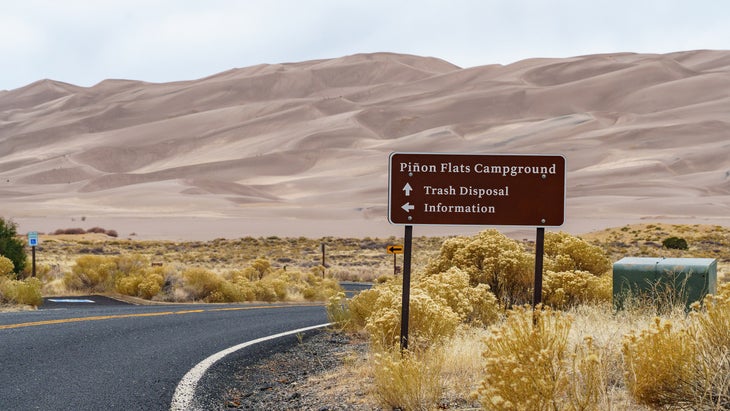
Great Sand Dunes National Park is a cool destination no matter what time of year you show up, and Piñon Flats puts you on the edge of this natural phenomenon, with impeccable views of the 700-foot dunes. The campground is especially popular during the annual peak flow of Medano Creek in early summer (typically starting in late May), when snowmelt fills the creek basin, creating a temporary tubing run with wave surges tubers can ride. Even aside from this seasonal adventure, Pinon Flats Campground offers a majestic overnight, with some sites shaded by juniper trees and others offering incredible views of the dunes rolling toward the Sangre De Cristo Mountains. There are no RV hookups, but the place has potable water, dishwashing stations, and flush toilets. (No showers.)
Size: 88 sites; tents and small RVs
Season: Pinon Flats is open April through October
Reserve: Six months in advance on a rolling basis. First opportunity to reserve a site is Nov. 11.
Fee: $20 a night
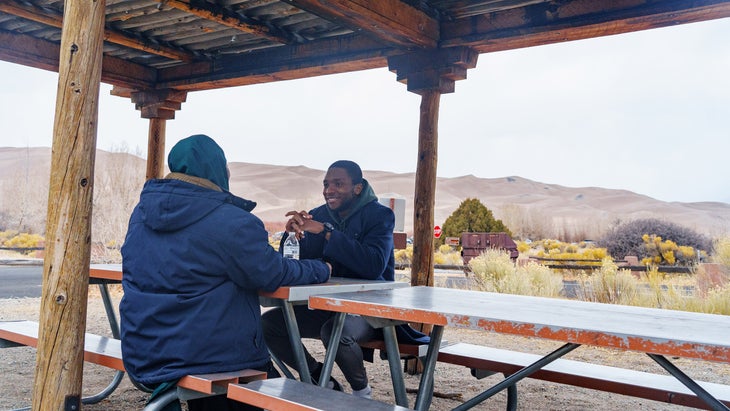
Best Site: Loop 1 has the best views of the dunes. Site 38 is a great van site with shade from adjacent juniper trees, and site 26 offers the same for tent campers.
Awesome Adventure: Hike the Dunes Trail straight from the campground heading towards High Dune, the tallest on the horizon, for a 2.5-mile out-and-back with a stop to cool off at Medano Creek.
5. Lower Pines Campground: Yosemite National Park, California
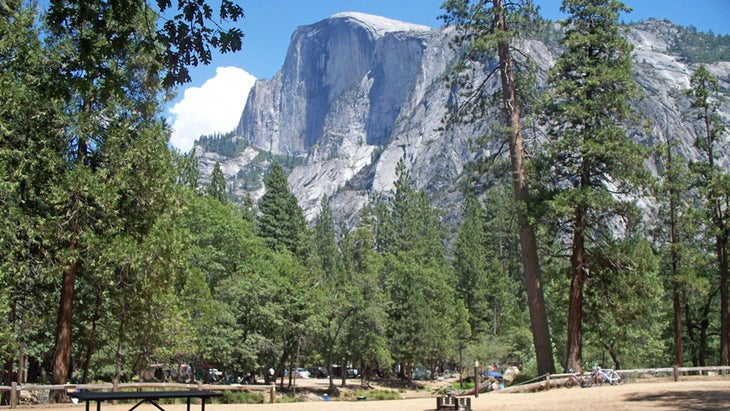
Lower Pines Campground puts you in the middle of Yosemite Valley, within walking distance of the stores and services in Curry Village. It’s smaller than the other campgrounds in Yosemite National Park and has incredible views of El Capitan and Half Dome. Many sites are also tucked into the ponderosa pine forest and are more spacious than other campsites in the valley, offering a good sense of privacy.
Size: 73 sites, tents and RVs
Season: Typically open from mid-April to late October
Reserve: Reservations open for the entire month, five months in advance on the 15th of each month at 7 A.M. Pacific time. Confused? For a reservation during Memorial Day (or any time from May 15 to June 14), you need to be ready to book a site at 7 A.M. on January 15.
Fee: $36 per night.
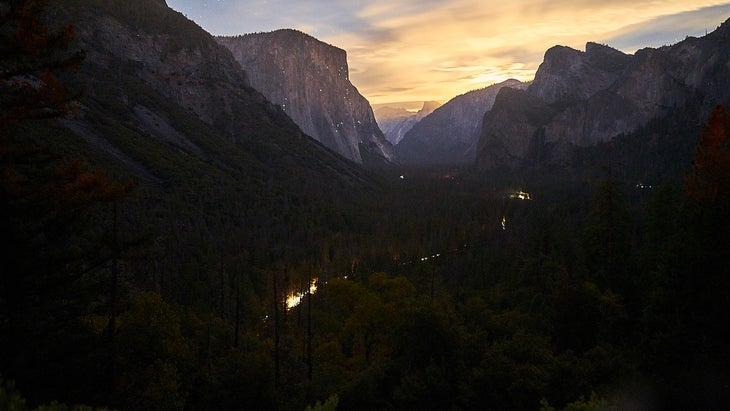
Best Site: They’re all good, but 37, 38, and 39 back up to the Merced River.

Awesome Adventure: You’re gonna spend most of your time hiking Yosemite’s big attractions, but set aside a morning for biking the Falls View Loop on a paved bike path that cruises by your campground and offers crazy-good views of the Valley’s waterfalls and monoliths.
6. Kalaloch Campground: Olympic National Park, Washington
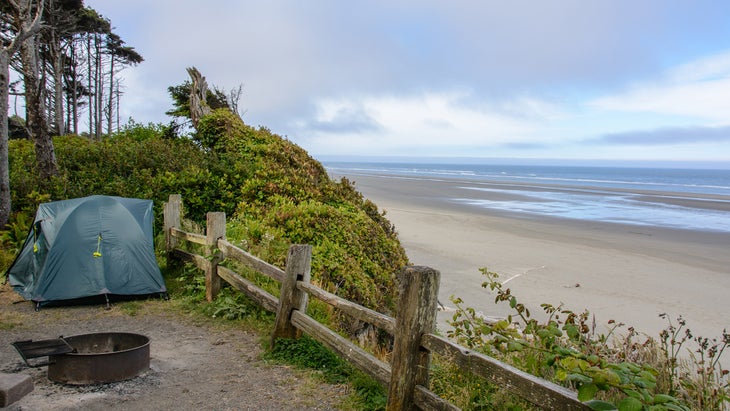
Situated on the southwest corner of the Olympic Peninsula, Kalaloch Campground in Olympic National Park has sites on a bluff 40 feet above the beach overlooking the Pacific Ocean. A trail leads from the campground to the beach below. The lush coastal forest surrounding the campground gives you the sense that you’re camping on the planet of Endor with the Ewoks.
Size: 160 sites; tents and small RVs (no hookups)
Season: Open for reservations May 23 to Sept. 23
Reserve: Six months in advance for sites on the A and B loops. The C and D loop campsites will be available for reservation four weeks in advance, and the E and F loop sites will be available for reservation four days in advance.
Fee: $24 per site
Best Site: A18 and A25 will get you right on the edge of the bluff, with broad views of the ocean.
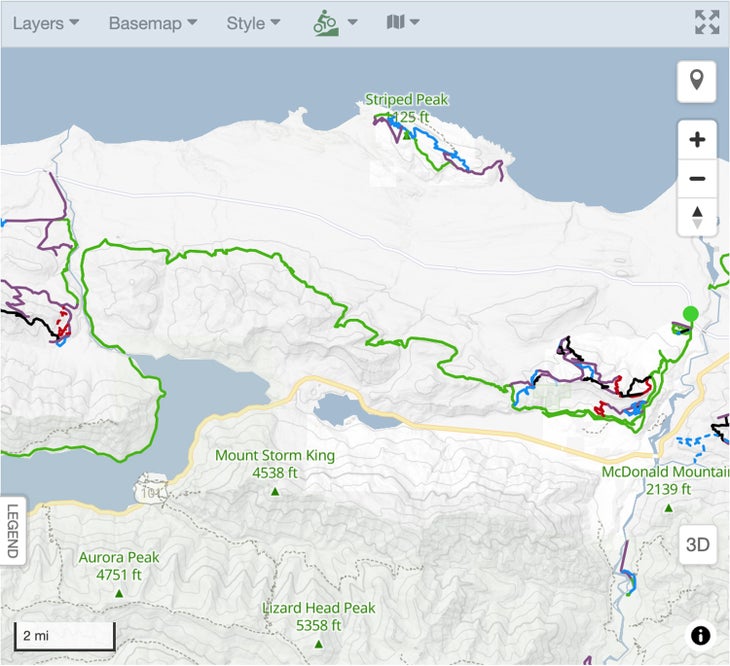
Awesome Adventure: Obviously, you’re going to hit the beach, but bring your gravel or mountain bike to ride the 25-mile Olympic Adventure Trail, a double and singletrack loop built with bikers in mind. The trail cruises the forest around Lake Crescent.
7. Watchman Campground: Zion National Park, Utah

The smaller South Campground actually edges out Watchman for being the most popular inside Zion National Park, but South’s reservations open up 14 days in advance—if that is what you want, you have a while to book those sites. Beware, though, that South is undergoing some rehabilitation this summer that will limit its number of available spots, which may bring you back to Watchman Campground. The campground sits near the park’s south entrance, within walking distance of the restaurants and shops in Springdale. It’s surrounded by airy sandstone walls and tucked against the Virgin River.
Size: 179 sites; tents and RVs with hookups
Season: Year round
Reserve: Six months in advance. Grab a spot for May 24 on November 24 at 10 A.M. EST.
Fee: $30
Best Site: Grab a spot in the F loop, which offers quiet walk-to sites with shade thanks to pergolas (wooden shades) and the occasional cottonwood tree.
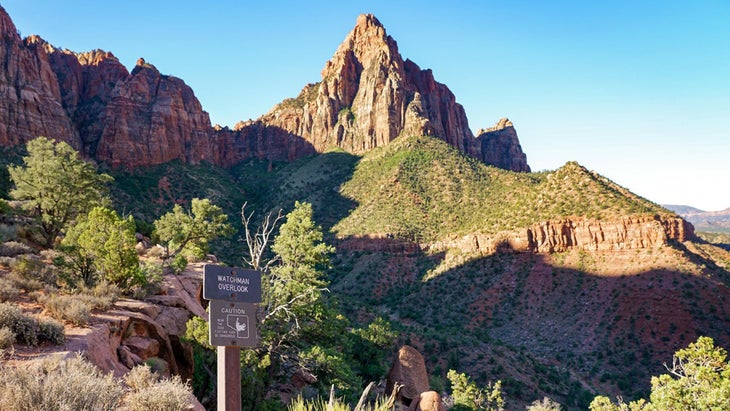
Awesome Adventure: Pick up the three-mile out-and-back Watchman Trail right from the campground, and hike to an overlook with views of some of Zion’s most prominent sandstone features, including the Watchman, Temples and Towers, and Lower Zion Canyon.
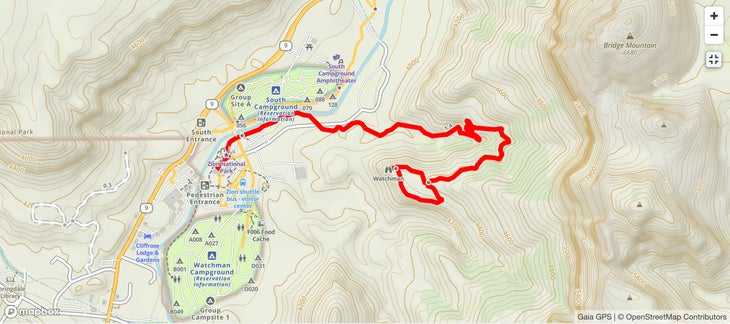
8. Duck Harbor Campground: Acadia National Park, Maine
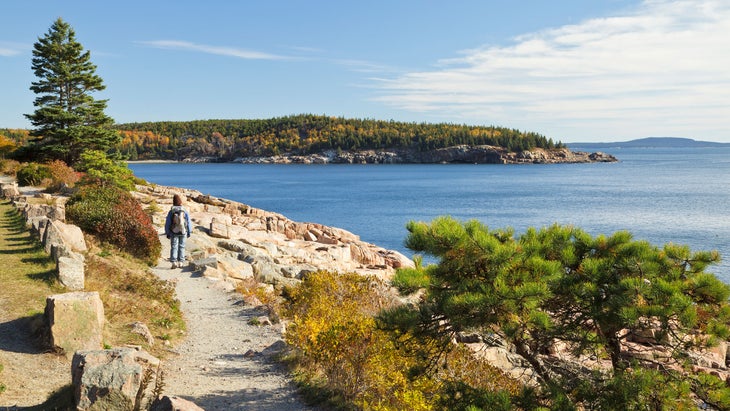
A site in Acadia’s Duck Harbor Campground might be the toughest National Park reservation to score. The small campground is located on the rocky Isle au Haut, off the coast of Maine and only accessible by boat. The Park Service manages half of the island, while the other half is set aside for a permanent fishing village. Not only is the scene picturesque, with rugged bluffs, primitive coastline, and healthy evergreen forests, but there are only five sites, which brings the laws of scarcity into play. All the sites have three-sided lean-tos and fire rings and are tucked into an evergreen forest overlooking Duck Harbor.
Size: 5 lean-to sites
Season: May 15 to October 15
Reserve: All sites throughout the season can be reserved April 1 at 10 A.M. Eastern.
Fee: $20 per night
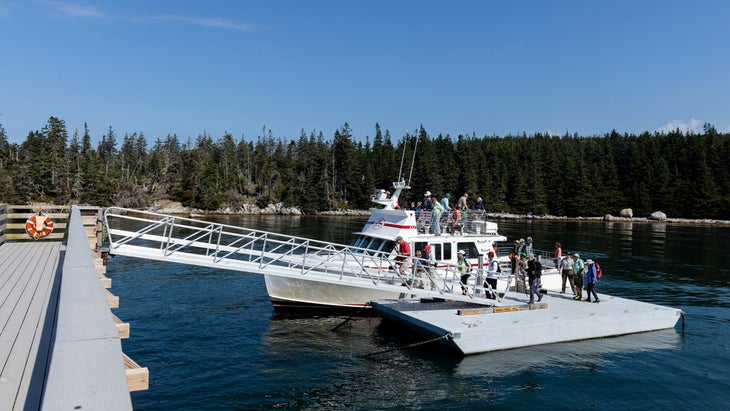
Best Site: When a campground has only five sites, snagging anything of them is huge, so don’t be picky. But site 5 has quick access to the shoreline and good views of the harbor.
Awesome Adventure: Bring your mountain bike to pedal on the 12 miles of paved and unpaved roads traversing the island. You’ll also find 18 miles of hiking trails that access rocky shoreline, bogs, and a freshwater lake.
Graham Averill, Outside magazine’s national parks columnist, has been camping since he was a baby, when his family would take weekend trips into Georgia’s Chattahoochee National Forest. As an adult with his own family, he is still learning a few campcraft lessons, such as not to set out on a parks road trip without making site reservations.
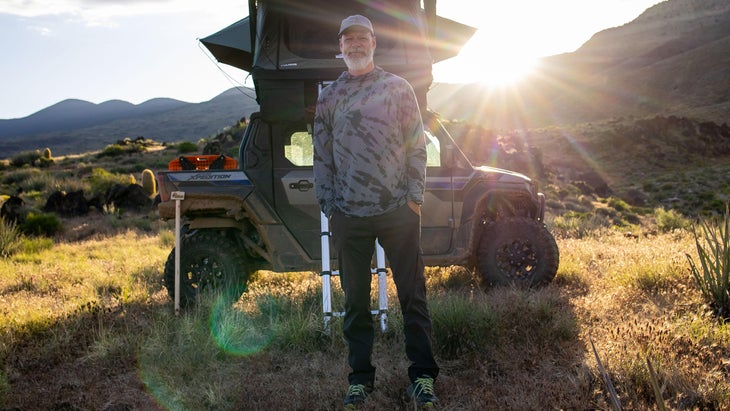
For more from this author, see these recent articles:
Source link

